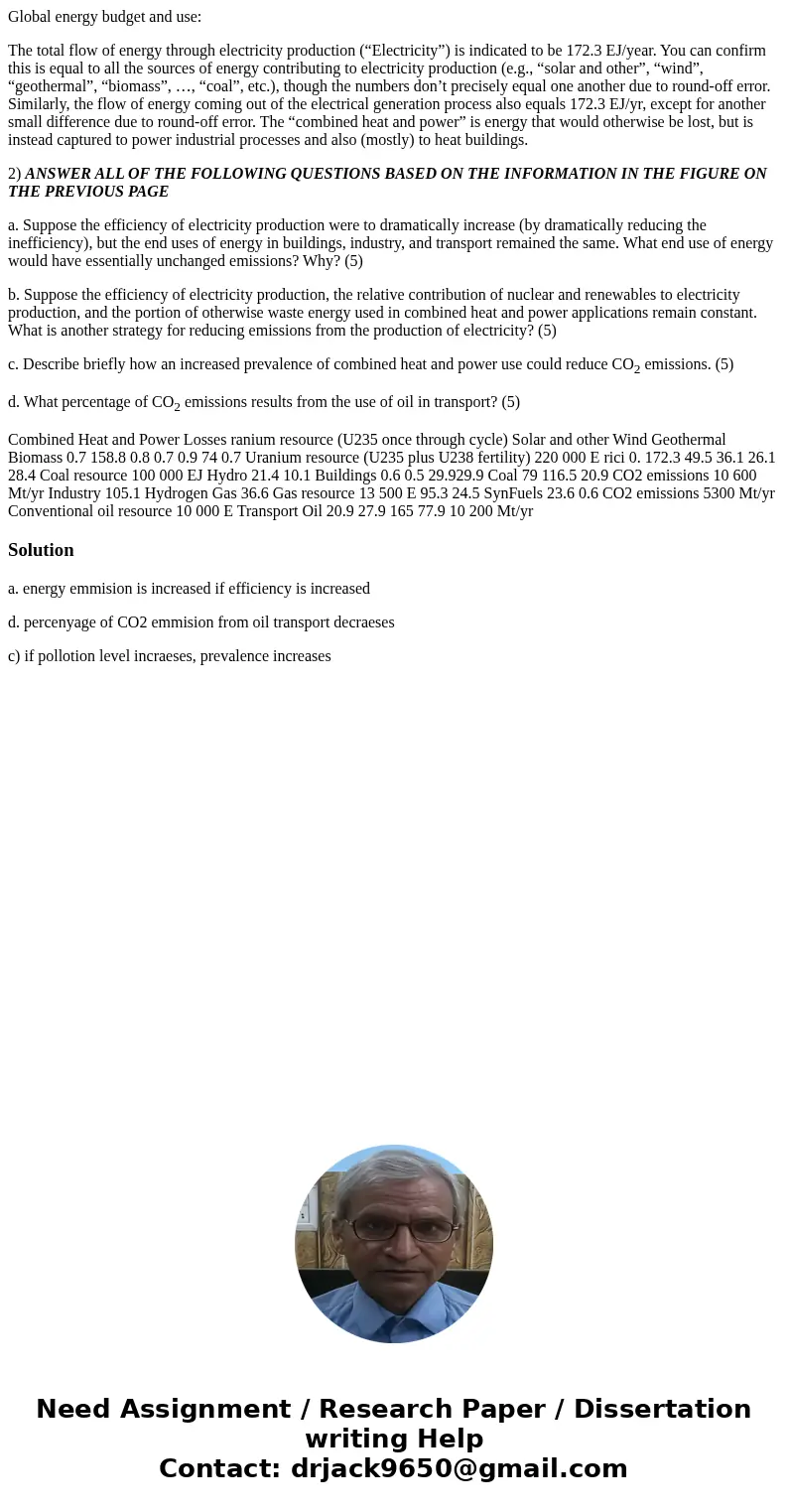Global energy budget and use The total flow of energy throug
Global energy budget and use:
The total flow of energy through electricity production (“Electricity”) is indicated to be 172.3 EJ/year. You can confirm this is equal to all the sources of energy contributing to electricity production (e.g., “solar and other”, “wind”, “geothermal”, “biomass”, …, “coal”, etc.), though the numbers don’t precisely equal one another due to round-off error. Similarly, the flow of energy coming out of the electrical generation process also equals 172.3 EJ/yr, except for another small difference due to round-off error. The “combined heat and power” is energy that would otherwise be lost, but is instead captured to power industrial processes and also (mostly) to heat buildings.
2) ANSWER ALL OF THE FOLLOWING QUESTIONS BASED ON THE INFORMATION IN THE FIGURE ON THE PREVIOUS PAGE
a. Suppose the efficiency of electricity production were to dramatically increase (by dramatically reducing the inefficiency), but the end uses of energy in buildings, industry, and transport remained the same. What end use of energy would have essentially unchanged emissions? Why? (5)
b. Suppose the efficiency of electricity production, the relative contribution of nuclear and renewables to electricity production, and the portion of otherwise waste energy used in combined heat and power applications remain constant. What is another strategy for reducing emissions from the production of electricity? (5)
c. Describe briefly how an increased prevalence of combined heat and power use could reduce CO2 emissions. (5)
d. What percentage of CO2 emissions results from the use of oil in transport? (5)
Combined Heat and Power Losses ranium resource (U235 once through cycle) Solar and other Wind Geothermal Biomass 0.7 158.8 0.8 0.7 0.9 74 0.7 Uranium resource (U235 plus U238 fertility) 220 000 E rici 0. 172.3 49.5 36.1 26.1 28.4 Coal resource 100 000 EJ Hydro 21.4 10.1 Buildings 0.6 0.5 29.929.9 Coal 79 116.5 20.9 CO2 emissions 10 600 Mt/yr Industry 105.1 Hydrogen Gas 36.6 Gas resource 13 500 E 95.3 24.5 SynFuels 23.6 0.6 CO2 emissions 5300 Mt/yr Conventional oil resource 10 000 E Transport Oil 20.9 27.9 165 77.9 10 200 Mt/yrSolution
a. energy emmision is increased if efficiency is increased
d. percenyage of CO2 emmision from oil transport decraeses
c) if pollotion level incraeses, prevalence increases

 Homework Sourse
Homework Sourse